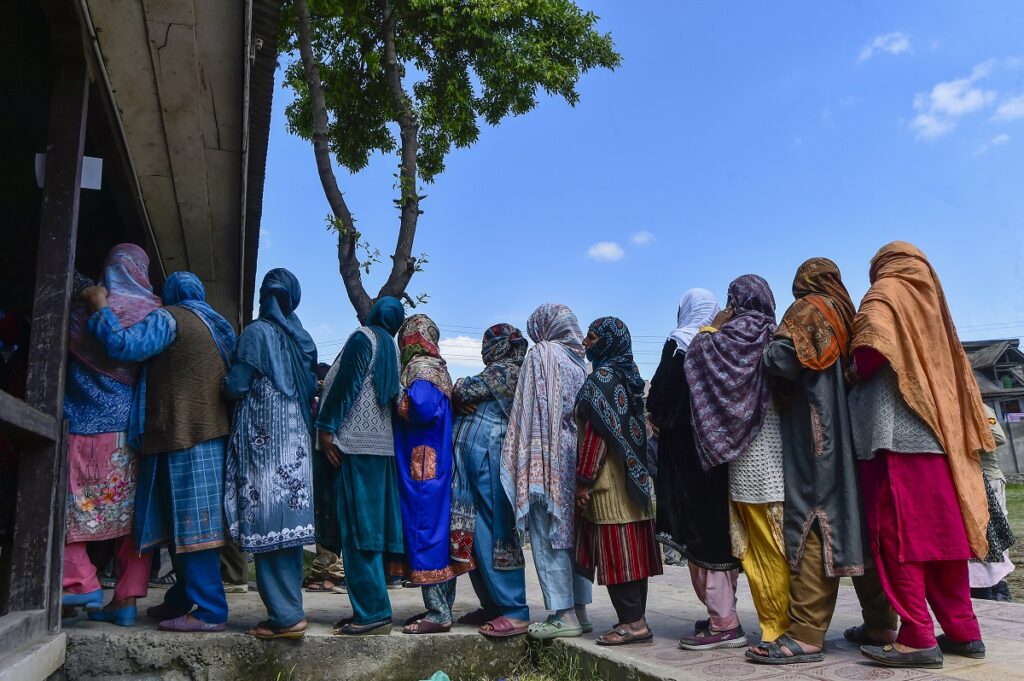
By KO Political Bureau
Srinagar- Srinagar witnessed the highest turnout over two decades but still has fallen short of expectations. The turnout is, however, a big jump from the 2019 parliament polls when a mere 14.43 percent of people turned out to vote. The figures for 2014, 2009, 2004 and 1999 are 25.86 percent, 25.55 percent, 18.57 percent and 11.93 percent respectively.
The election in Srinagar was crucial as the city has consistently boycotted polls since 1987 Assembly polls which were widely perceived to have been rigged. The city has been in a limbo ever since. Though there has been an occasional furtive urge to re-assert its electoral power, Srinagar has generally shied away from political participation. Whether Monday’s hesitant participation will now set the stage for an active political participation in the subsequent polls will be a development of profound significance.
Unlike the past, Hurriyat factions refrained from calling for a boycott. Moderate Hurriyat leader Mirwaiz Umar Farooq in a recent statement said that “the drastic unilateral changes had complicated the dynamics of the Kashmir issue in 2019, making boycott of elections irrelevant.
“In the changed circumstances, issuing a boycott call does not seem to carry the sense or yield the impact like in the past,” he said in his election eve statement,” Mirwaiz said.
Mirwaiz also clarified the Hurriyat’s stance on elections, saying it never had reservations about the idea of elections.
“Constituents of the united Hurriyat did participate in elections held before 1990,” he said while reiterating his objections to the “misrepresentation” of these elections by the government of India in the context of the Kashmir conflict.
However, the absence of a boycott call did not guarantee a high voter turnout in Srinagar. The reason is that the poll boycott has become a default response among a significant section of people, particularly in urban areas. It is an over three decade old habit which may not go away easily.
Since the early nineties, separatists have championed the boycott of elections, although this trend has seen diminishing returns over the years. The urban areas still witness significant boycotts but the rural areas generally experience higher voter turnout.
It is true that there have been unprecedented changes in the region over the past five years, such as politicians campaigning deep into Srinagar’s interiors. Kashmir may have changed beyond recognition in recent years, but it is also true that much of this change is not organic. The Assembly election, likely to be held in near future, will be a better indicator of the public mood in the Kashmir Valley and will decide the future political trajectory of the region.
Follow this link to join our WhatsApp group: Join Now
Be Part of Quality Journalism |
Quality journalism takes a lot of time, money and hard work to produce and despite all the hardships we still do it. Our reporters and editors are working overtime in Kashmir and beyond to cover what you care about, break big stories, and expose injustices that can change lives. Today more people are reading Kashmir Observer than ever, but only a handful are paying while advertising revenues are falling fast. |
| ACT NOW |
| MONTHLY | Rs 100 | |
| YEARLY | Rs 1000 | |
| LIFETIME | Rs 10000 | |













